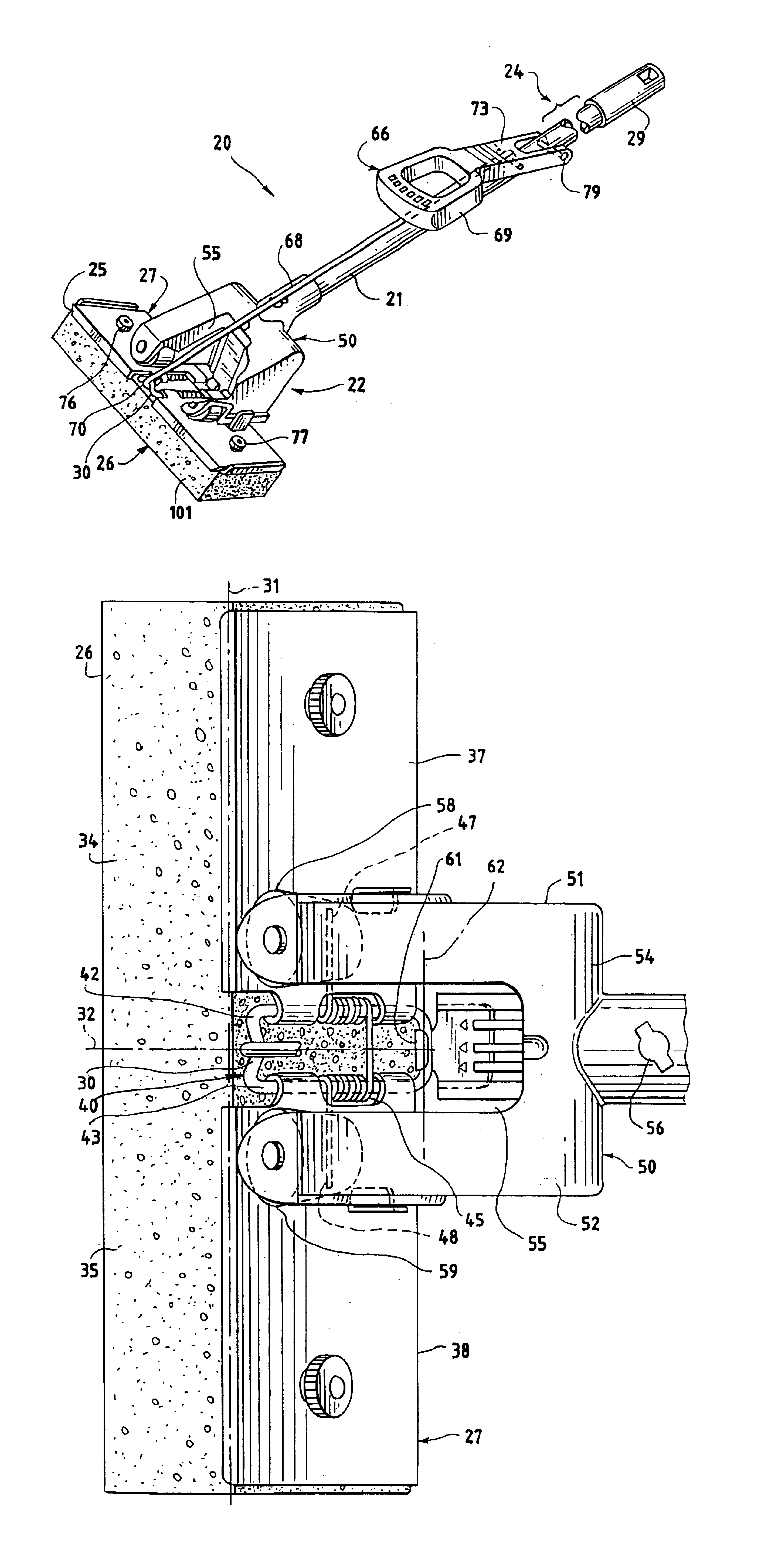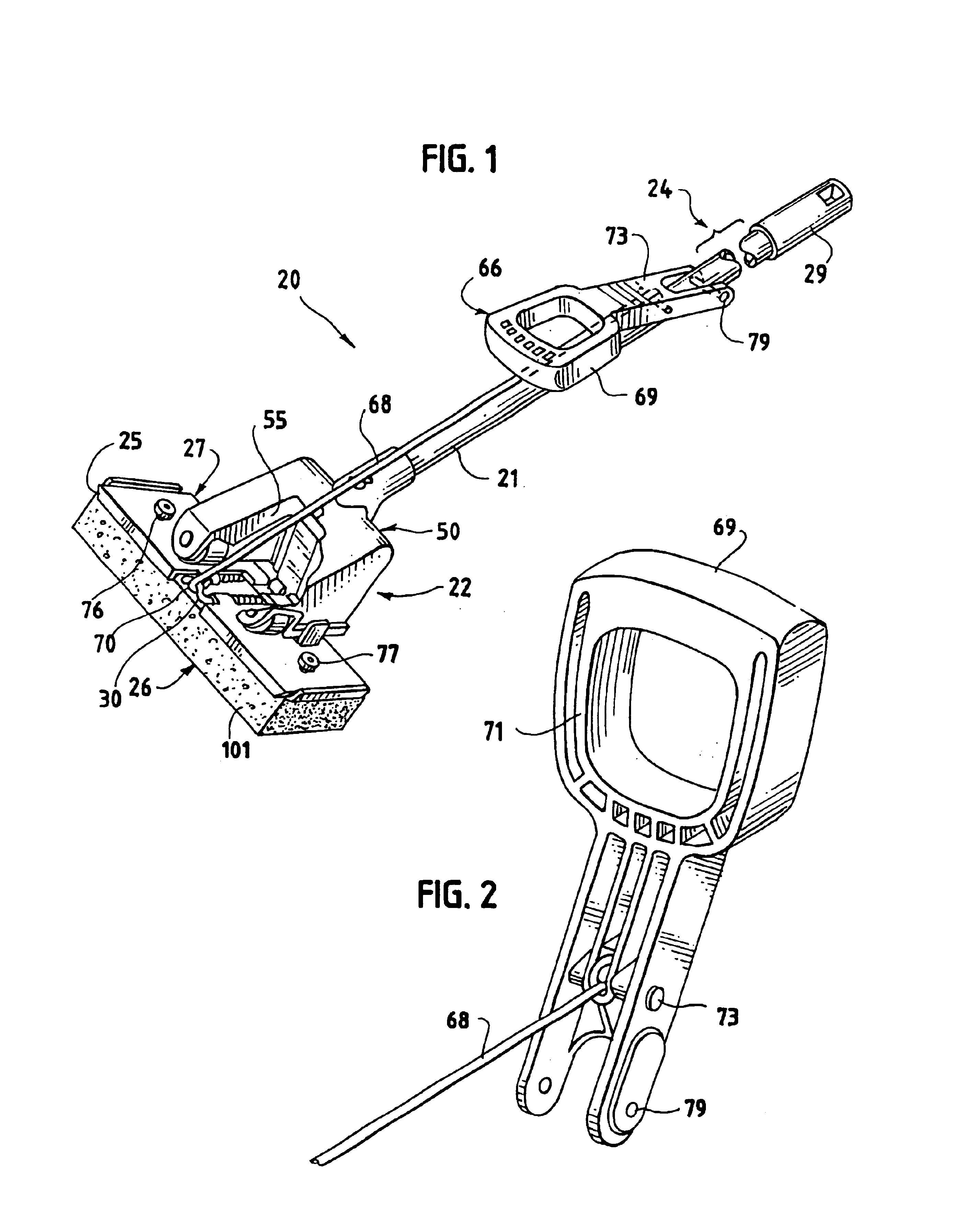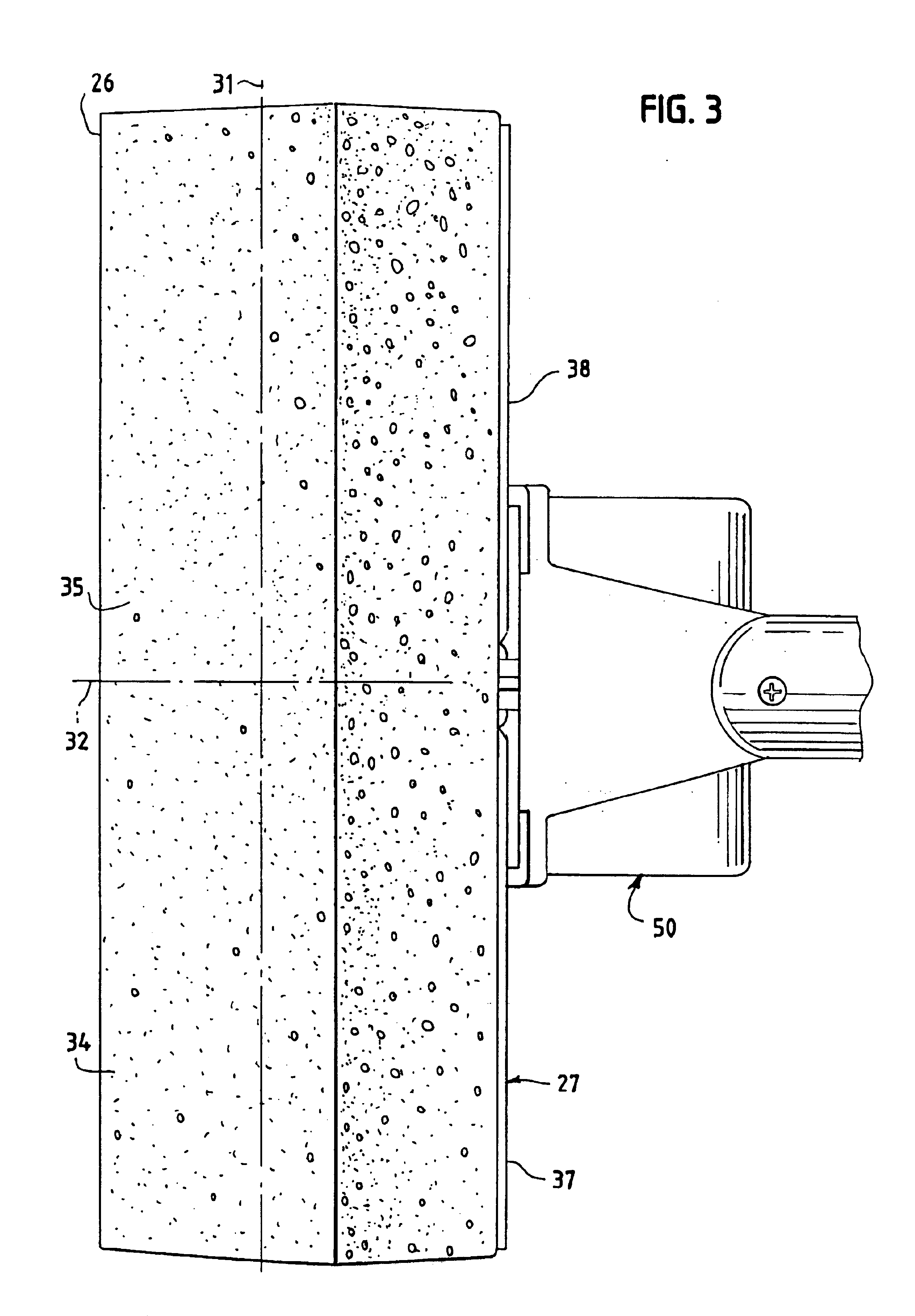Mops and mop components
a technology of mop components and mop blades, which is applied in the field of mop blades, can solve the problems of reducing affecting the service life of the mop blade, and requiring substantial physical effort to compress the absorbent member, so as to achieve quick and easy removal and easy replacement.
- Summary
- Abstract
- Description
- Claims
- Application Information
AI Technical Summary
Benefits of technology
Problems solved by technology
Method used
Image
Examples
Embodiment Construction
Referring now to FIGS. 1-4, the butterfly mop 20 generally includes a mop shaft 21 having a mopping end 22 and a gripping end 24. Disposed at the mopping end 22 is a mop element assembly 25 including a mop element 26 and a mop element support 27. The mop element 26 includes an absorbent member of spongy material as shown in FIG. 1 and a flexible, relatively tough inner layer (not shown in FIG. 1) which is secured to the support 27, by fasteners 76, 77. At the gripping end 24 of the mop shaft 21 is disposed a hanger clip 29 for supporting the mop for storage.
With particular reference to FIGS. 3 and 4, the mop element 26 comprises a flexible, compressible absorbent member which absorbs liquid and from which liquid may be expelled upon compression thereof. The mop element has a longitudinal axis 31 and a central transverse axis 32 generally perpendicular to the longitudinal axis 31. The central axis 32 divides the mop element generally into two regions, a first region 34 and a second r...
PUM
 Login to View More
Login to View More Abstract
Description
Claims
Application Information
 Login to View More
Login to View More - R&D
- Intellectual Property
- Life Sciences
- Materials
- Tech Scout
- Unparalleled Data Quality
- Higher Quality Content
- 60% Fewer Hallucinations
Browse by: Latest US Patents, China's latest patents, Technical Efficacy Thesaurus, Application Domain, Technology Topic, Popular Technical Reports.
© 2025 PatSnap. All rights reserved.Legal|Privacy policy|Modern Slavery Act Transparency Statement|Sitemap|About US| Contact US: help@patsnap.com



